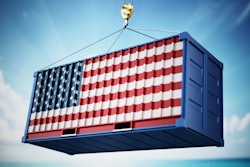
Innovative changes in technology, processes and business practices are rapidly transforming the world. It can be challenging for many companies to confidently embrace these new methods. Some may be hesitant to "throw everything against the wall to see what sticks," while others are content with maintaining the status quo. However, companies who prioritize sustainability practices along their supply chains can reap rewards financially, being recognized as a good steward and solidifying better business partnerships.
Making meaningful strides towards sustainability requires proactive thinking rather than reactive responses to changing trends and customer expectations. Companies should carefully evaluate available strategies and make informed decisions about how to best contribute to a more sustainable future. Research is key in this process; looking into industry leaders’ experiences and utilizing data-driven analysis can help inform effective ways that a company can implement wave-making initiatives towards sustainability.
Beginning the race toward sustainability
The implementation of sustainable practices within an organization is paramount. It is imperative that everyone understands the benefits of green supply chain management (GSCM) for customers, employees and the company as a whole. The Pareto principle, also known as the (80/20) rule, should be employed to identify areas where the most significant progress can be made.
After determining the areas of greatest opportunity, a managed approach such as Six Sigma’s (DMAIC) methodology: define, measure, analyze, improve and control should be adopted to manage the process. As a company focuses on efficiency with sustainability as the foundation, operational expenses will decrease due to reduced waste, efficient resource management, and decreased production costs. Prioritizing the following items can contribute to the accomplishment of these goals: lighting systems, temperature control (HVAC, insulation, HVLS fans, dock seals, etc.), stormwater management, landscaping maintenance and cooperation with utility providers.
The integration of sustainable practices provides an opportunity for product differentiation and competitive advantages. However, to mitigate expenses, it is vital to have a measurable process for each initiative. Manufacturers are taking significant steps to encourage vendors and suppliers to adopt sustainable practices that align with the company's sustainability and efficiency objectives.
Fortune 1000 companies have already begun utilizing their carbon footprint as a success metric/branding strategy. This metric will also provide a means to narrow down third-party logistics (3PL) providers bidding for contracts. 3PLs are also commencing branding strategies that highlight their sustainable innovations and practices. Therefore, incorporating sustainable practices not only ensures environmental sustainability, but also creates sustainable business practices, positively impacting various aspects of the company. Here are a few of the discussion points that will be highlighted this year as sustainability continues to take the center stage of supply chain news.
1. Green building design
The conversation surrounding the implementation of Leadership in Energy and Environmental Design (LEED) certifications has predominantly centered around office buildings, mixed-use properties and multi-family dwellings. Yet, with the rapid expansion of online retail and business-to-consumer distribution networks, the significance of green practices at the industrial level has become increasingly apparent. The United States Green Building Council's (USGBC) multi-tier rating systems present a range of opportunities to implement sustainable Green Supply Chain Management (GSCM) practices within industrial warehouses.
A LEED certification can be achieved for spec industrial and build-to-suit sites by integrating green building design features, building systems, user behavior and construction methods. Several sustainable features can be incorporated with ease, regardless of whether or not a LEED certification is the end goal. Some noteworthy examples include:
- Lighting systems and fixtures - Lighting accounts for roughly 30% of energy usage in a distribution center.
- Bioswales - installation of native prairie grass plants, etc.
- French drains
- Clerestory glass
- Daylighting sensors
- Recycled carpet
These sustainable features and more contribute to the concept of a "net-zero" rating for buildings which is becoming increasingly popular in the field of architecture. This rating means that a building's design, construction, systems, appliances, equipment, operations, maintenance and user behavior are optimized for maximum energy efficiency. Any remaining energy needs are then met with on-site renewable energy solutions. This shift towards reducing our reliance on non-renewable energy is essential for mitigating the impacts of climate change.
2. Location, location
In the realm of supply chain sustainability, location is a significant factor that cannot be overlooked. The positioning of distribution centers have a direct impact on transportation costs, which account for a substantial portion of energy consumption in the supply chain. Additionally, decision makers are now prioritizing proximity to inbound ports and customers in their efforts to optimize distribution portfolios.
3. Economics and financing
It is essential to note that sustainable practices come at a cost, and this is where hesitancy comes from leaders in the corporate world.
For instance, setting up a solar array on the roof of a public warehousing facility with short-term contracts may not be financially prudent. Sustainable capital expenditures are typically funded by contracts that offset the costs through realized savings over a specified "payback period." This underscores the importance of strong partnerships between logistics firms and their clients in communicating the long-term value of sustainable investments.
Making way for a sustainable tomorrow
There’s no denying that constructing a green building design, finding the right location and being willing to pay the cost for a better future will take a lot of effort.
Even with that in mind, sustainability should be a core principle in supply chain management. Every aspect of the supply chain should be examined and improved to reduce its environmental impact no matter how much time and energy it takes.
By focusing on sustainable practices, organizations will prepare for a future filled with reduced waste, optimized resources and a healthier society. Eventually, supply chain sustainability will no longer be a choice but a necessity for businesses to operate in a world with limited resources. It is time for organizations to embrace sustainable practices and work together to create a better, more sustainable future.















